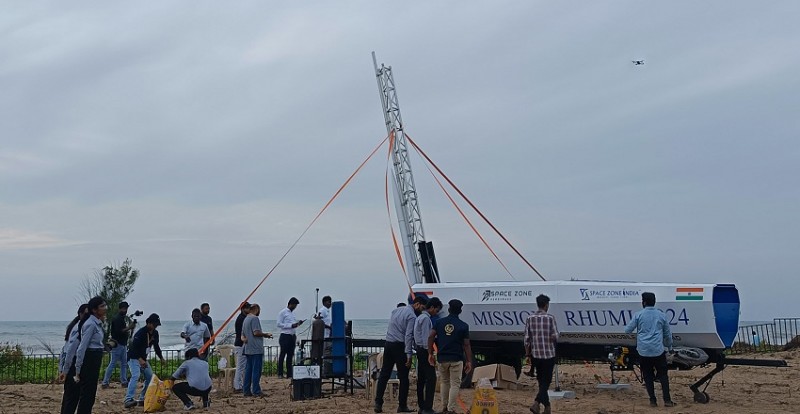
Chennai: India has achieved a significant milestone with the successful launch of its first reusable hybrid rocket, 'RHUMI-1'. This cutting-edge rocket was developed by the Chennai-based start-up Space Zone India in collaboration with Martin Group and was launched from Thiruvidandhai, Chennai, on Saturday.
The RHUMI-1 rocket carried an impressive payload of 3 Cube Satellites and 50 PICO Satellites, designed for data collection related to global warming and climate change. The rocket was launched into a suborbital trajectory using a mobile launcher, marking a new chapter in India’s space exploration efforts.
RHUMI-1 stands out due to its innovative features. It is powered by a hybrid motor using a generic fuel, and it boasts a parachute deployer that is electrically triggered. Importantly, the rocket is entirely free from pyrotechnics and does not contain any TNT, ensuring a safer and more environmentally friendly launch.
The mission was spearheaded by Anand Megalingam, the visionary founder of Space Zone India, under the guidance of Dr. Mylswamy Annadurai, former director of a leading satellite research center.
RHUMI-1's unique design combines the benefits of both liquid and solid fuel propellant systems, resulting in enhanced efficiency and reduced operational costs. The successful launch is a significant step forward in the pursuit of affordable and sustainable space solutions.
Space Zone India is committed to advancing the space industry by providing cost-effective and long-term technological solutions. It also offers hands-on training in various fields, including Aerodynamics, Satellite Technology, Drone Technology, and Rocketry. The company actively works with educational institutions and creates awareness about career opportunities in the space sector.
In 2023, Space Zone India successfully engaged over 2,500 students from across the country, including those from government, tribal, and public schools, in the development of a student satellite launch vehicle. This initiative, named after a prominent Indian figure, allowed students to contribute to the design and construction of a satellite launch vehicle capable of carrying a payload of 150 PICO satellites for research purposes.
Read Other News Updates:
ISRO Becomes First to Land on Moon's South Pole in Just 50 Years: Dr. Jitendra Singh
Why Are NASA Astronauts Stuck in Space? Dr. Somanath Gives Insight on the Boeing Starliner Issue